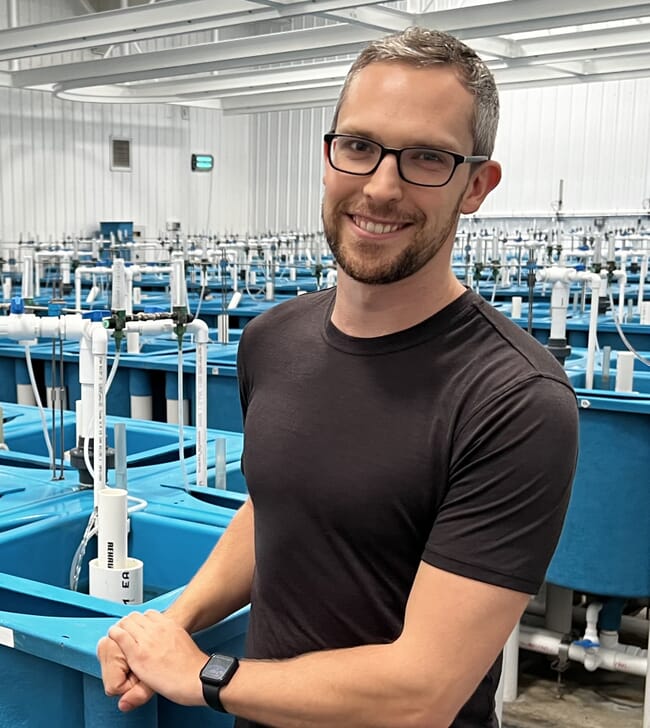
© CAT
May brings scientific expertise and practical experience across coral research, salmon genetics and selective breeding in aquaculture. His journey into genetics began at university where a population genetics course sparked a passion that led to a PhD in genetics and a role managing the United States Department of Agriculture salmon selective breeding programme in Maine. There, he focused on cryopreservation, trait optimisation and genetic diversity to improve breeding efficiency and sustainability.
“I wanted to move from academic theory to real-world impact. CAT offered the opportunity to work across species, solve complex problems and help clients make meaningful genetic gains,” said May in a press release.
CAT specialises in aquaculture genetics, managing over 20 breeding programmes across more than a dozen aquatic species. Leveraging a diverse portfolio of more than 50 genomic tools and deep expertise in genotyping, genome editing, advanced data analytics and quantitative breeding strategies, CAT delivers customised genetics solutions that drive measurable gains in performance, sustainability and profitability.
“Bringing Sam on board strengthens our support for clients across North America. His diverse experience enhances our ability to apply advanced genetic tools in practical settings, delivering real value to our clients,” said Klara Verbyla, vice president of genetic improvement.
In his new role, Sam will manage selective breeding programmes for clients across the US and Canada, helping them implement new technologies, streamline operations and make smarter data-driven breeding decisions.
“Genetics is one of the most powerful tools the industry has to tackle challenges like disease resistance, growth and sustainability. By applying the right tools, we help producers raise healthier, more efficient fish that meet evolving market demands,” added May.
CAT focuses on delivering practical genetic solutions that help producers improve growth rates, enhance disease resistance and align with shifting market demands. As the aquaculture sector adapts to environmental and production challenges, CAT continues to develop science-based tools and apply new technologies in genetics and genome editing to support more efficient and resilient farming systems.


